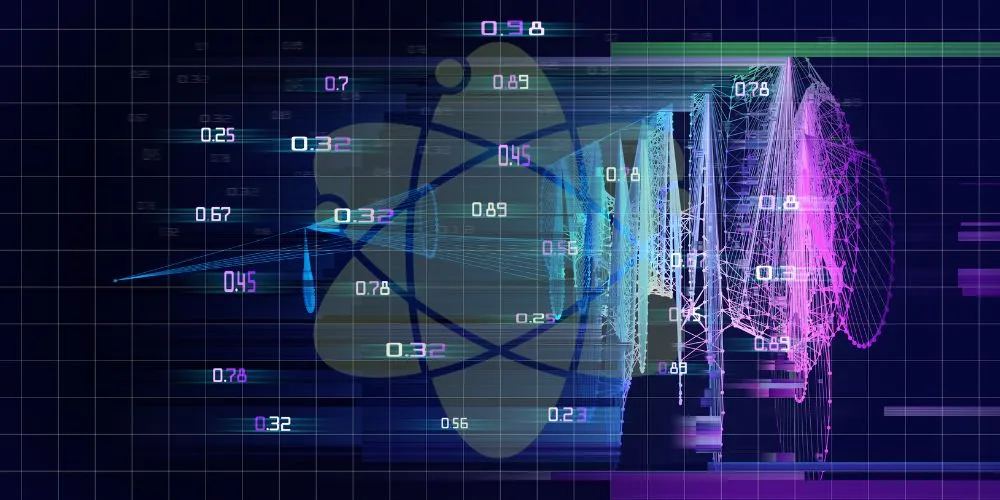In digital security, Quantum Cryptography stands as a groundbreaking paradigm that harnesses the principles of quantum mechanics to create a virtually unbreakable shield against cyber threats. This article explores Quantum Cryptography, unraveling its significance, underlying principles, diverse applications, and the transformative impact it holds on the landscape of secure communication in the quantum era.
The Significance of Quantum Cryptography
Quantum Cryptography represents a seismic shift in secure communication, offering a level of protection that goes beyond the capabilities of classical cryptographic methods. Its significance lies in its ability to leverage the fundamental principles of quantum mechanics, providing a secure framework theoretically immune to quantum computers’ computational power. In an era where traditional cryptographic algorithms face potential vulnerabilities from quantum computing, it emerges as the vanguard of unbreakable digital security.
Quantum Key Distribution (QKD) and Perfect Secrecy
Quantum Key Distribution (QKD) is at the heart of Quantum Cryptography, a revolutionary approach that ensures perfect secrecy in communication. Unlike classical key distribution methods, QKD utilizes quantum properties to transmit cryptographic keys securely. The principles of quantum superposition and entanglement guarantee that any attempt to intercept the quantum keys would disrupt the quantum state, alerting users to the presence of an eavesdropper. This perfect secrecy foundation establishes Quantum Cryptography as a stalwart defender against unauthorized access.
Overcoming Challenges in Classical Cryptography
As quantum computers advance, classical cryptographic algorithms face the looming threat of becoming vulnerable to efficient quantum attacks. With its foundation in quantum principles, it addresses these challenges head-on. Shor’s quantum algorithm, capable of efficiently factorizing large numbers, poses a significant risk to classical encryption. In contrast, it provides a robust alternative that remains resilient despite quantum threats, ensuring the long-term security of sensitive information.
Quantum Entanglement as a Security Enabler
The phenomenon of quantum entanglement, where particles become intrinsically correlated regardless of the distance between them, plays a pivotal role in Quantum Cryptography. Entangled particles enable the creation of cryptographic keys with inherent security. Even if an adversary attempts to intercept the entangled particles, the act of measurement disrupts the delicate quantum state, alerting users to the presence of an intrusion. This reliance on quantum entanglement adds an extra layer of security, making Quantum Cryptography a formidable safeguard for secure communication.
Underlying Principles of Quantum Cryptography
Quantum Cryptography draws its strength from the principles of quantum mechanics, utilizing the unique behaviors of quantum particles to establish secure communication channels.
Quantum Superposition in Key Distribution
Quantum superposition, a fundamental principle of quantum mechanics, allows particles to exist in multiple states simultaneously. In Quantum Cryptography, this principle enables the simultaneous transmission of quantum bits (qubits) representing 0 and 1. QKD exploits this duality to create cryptographic keys that remain secure against interception, as any attempt to measure the qubits inevitably disturbs their delicate superposition.
Quantum Entanglement for Secure Communication
Quantum entanglement forms the backbone of Quantum Cryptography’s security architecture. When particles become entangled, their quantum states become interconnected. Using entangled particles in the key distribution process ensures that any attempt to tamper with or intercept the particles disrupts the quantum entanglement, providing an immediate alert to users and thwarting potential security breaches.
No-Cloning Theorem and Information Security
The no-cloning theorem, a fundamental concept in quantum mechanics, stipulates that an arbitrary unknown quantum state cannot be perfectly copied. Applied to Quantum Cryptography, this theorem ensures that attempts to clone quantum states for malicious purposes are impossible. This inherent limitation adds an extra layer of security, as any unauthorized attempt to replicate quantum information would result in detectable alterations.
Diverse Applications of Quantum Cryptography
The applications of Quantum Cryptography extend across various domains, offering solutions to secure communication in an era where classical cryptography faces evolving challenges.
Secure Communication in Financial Transactions
It offers a robust solution for securing transactions in the financial sector, where the exchange of sensitive information is paramount. The unbreakable nature of quantum keys ensures the confidentiality and integrity of financial data, protecting against potential eavesdropping or data breaches.
Quantum Cryptography in Government Communications
Government communications, often involving classified information, demand the highest levels of security. It provides a future-proof solution for secure communication between government entities, safeguarding sensitive data from adversaries armed with quantum computing capabilities.
Quantum-Safe Cryptography for the Post-Quantum Era
As quantum computers advance, the need for quantum-safe cryptographic solutions becomes imperative. It is a foundation for developing post-quantum cryptographic algorithms, ensuring that secure communication remains resilient despite evolving quantum threats.
Overcoming Practical Challenges in Quantum Cryptography
While Quantum Cryptography holds immense promise, practical challenges must be addressed for widespread implementation and integration into existing communication infrastructures.
Quantum Key Distribution Distance Limitations
One practical challenge in Quantum Cryptography lies in the distance limitations of Quantum Key Distribution. Photons, the carriers of quantum information, are susceptible to signal loss over long distances. Overcoming this limitation requires advancements in quantum repeater technology, enabling the extension of secure communication ranges.
Integration with Existing Communication Infrastructures
Integrating Quantum Cryptography into existing communication infrastructures poses a practical challenge. Ensuring compatibility with current systems and protocols requires collaborative efforts between researchers, industry stakeholders, and policymakers to establish seamless integration pathways.
Scalability and Practical Implementation
The scalability of Quantum Cryptography for large-scale communication networks is an ongoing consideration. As the technology matures, addressing challenges related to scalability and practical implementation will be crucial for realizing the full potential of Quantum Cryptography in real-world applications.
Future Trends and Innovations in Quantum Cryptography
The future of Quantum Cryptography holds exciting prospects, with ongoing research and innovations poised to overcome current limitations and expand its applicability.
Quantum Key Distribution Satellites
Advancements in quantum communication satellites represent a future trend in Quantum Cryptography. These satellites aim to overcome distance limitations by establishing secure quantum communication links between ground stations and orbiting satellites, paving the way for global-scale secure communication networks.
Quantum Internet and Quantum Repeaters
The concept of a Quantum Internet, where quantum information can be shared securely over global networks, is gaining traction. Quantum repeaters, capable of extending the range of secure quantum communication, play a pivotal role in realizing the vision of a quantum-enhanced internet with unprecedented security capabilities.
Hybrid Cryptographic Solutions
Hybrid cryptographic solutions that combine classical and quantum-resistant algorithms are emerging as a transitional approach. This hybridization allows for integrating Quantum Cryptography into existing systems while providing a quantum-safe foundation for secure communication in the post-quantum era.
Conclusion
Quantum Cryptography stands as a beacon of unbreakable security in the quantum era, leveraging the intricacies of quantum mechanics to fortify communication against evolving cyber threats. Its significance in overcoming challenges posed by quantum computers, the underlying principles rooted in quantum mechanics, diverse applications, and ongoing innovations position Quantum Cryptography at the forefront of the future of secure communication.
As practical challenges are addressed, and future trends unfold, it promises to reshape the digital security landscape, ensuring a quantum-resistant foundation for the confidentiality and integrity of information in the ever-evolving digital landscape.











